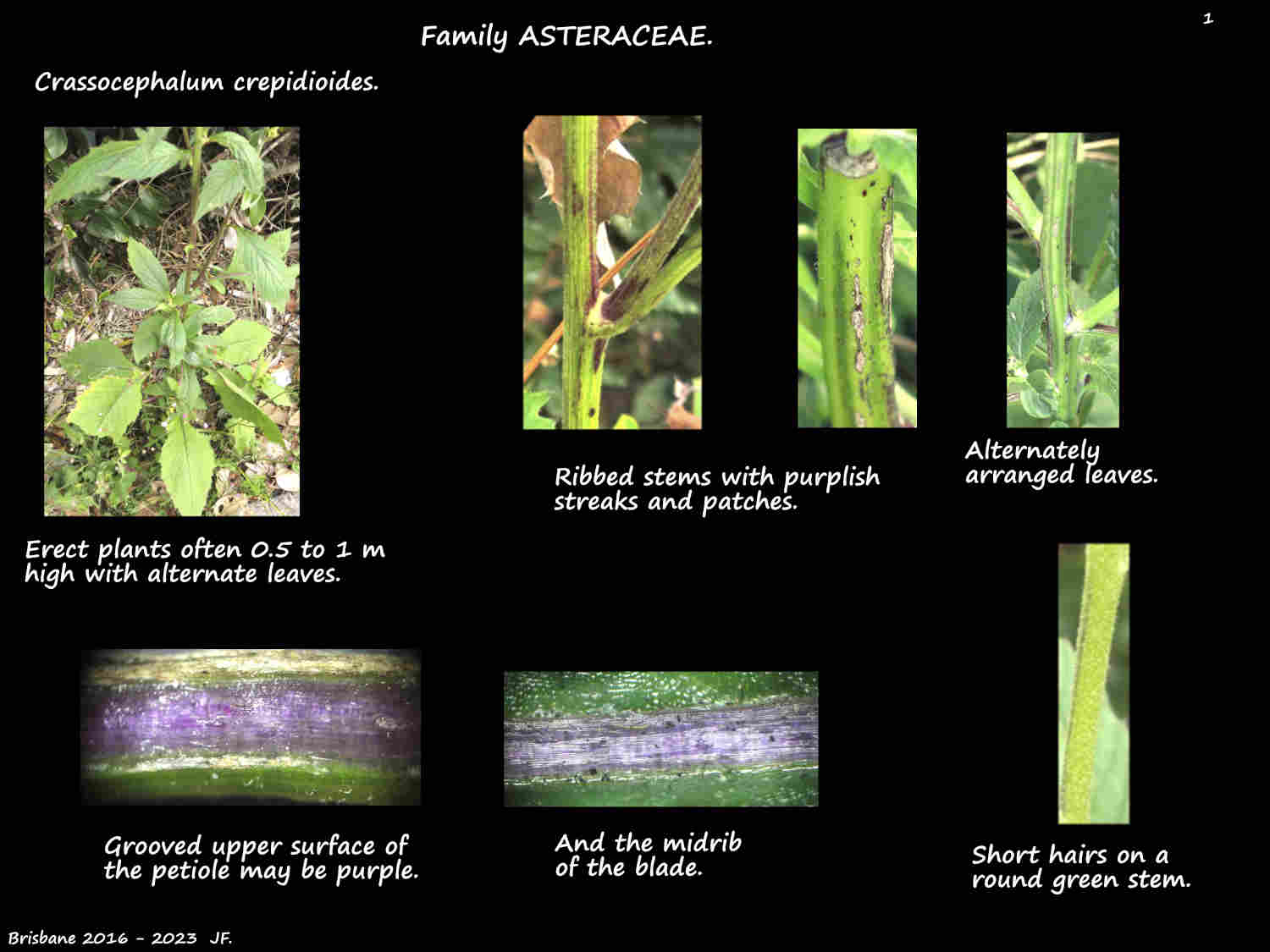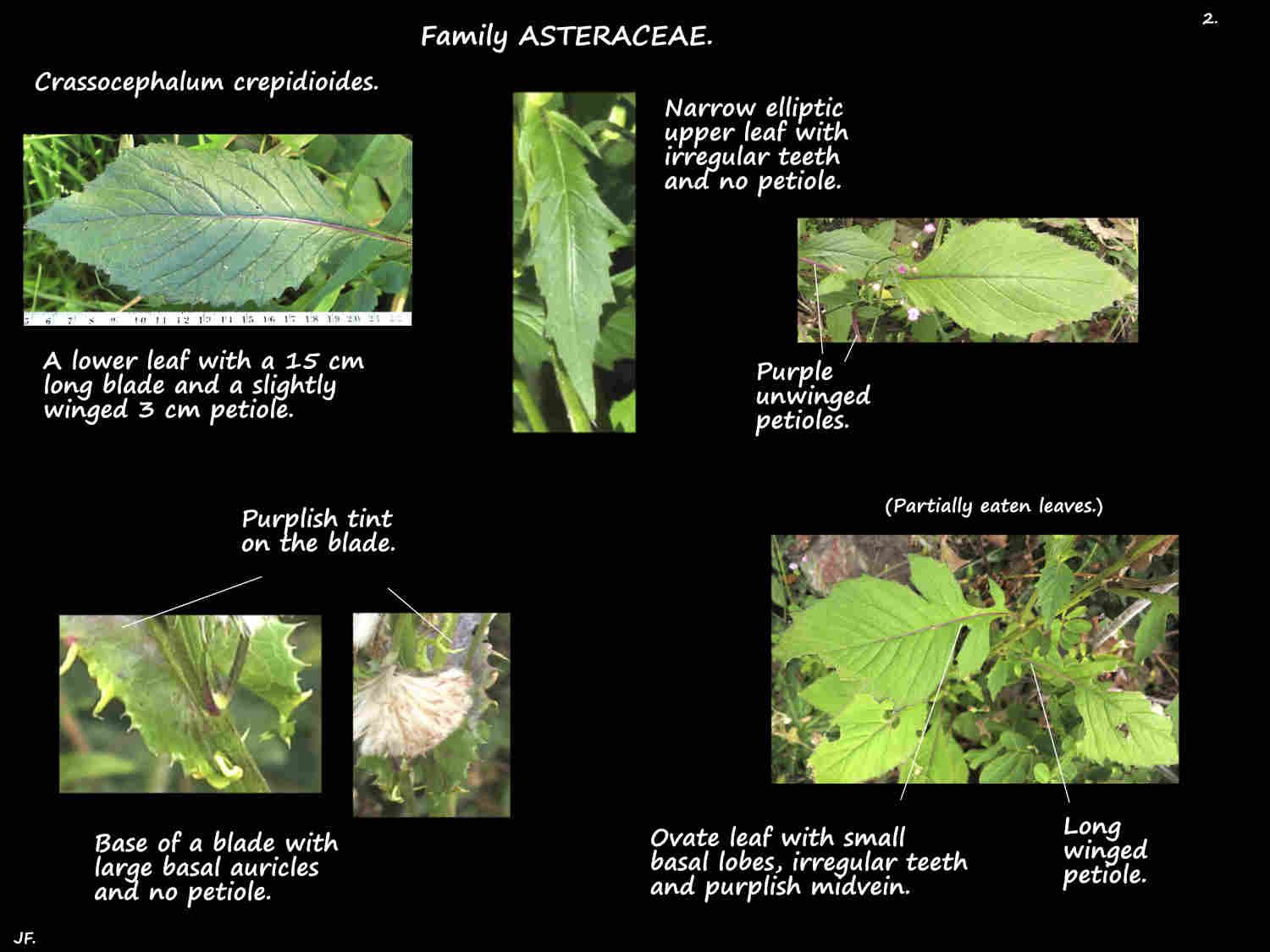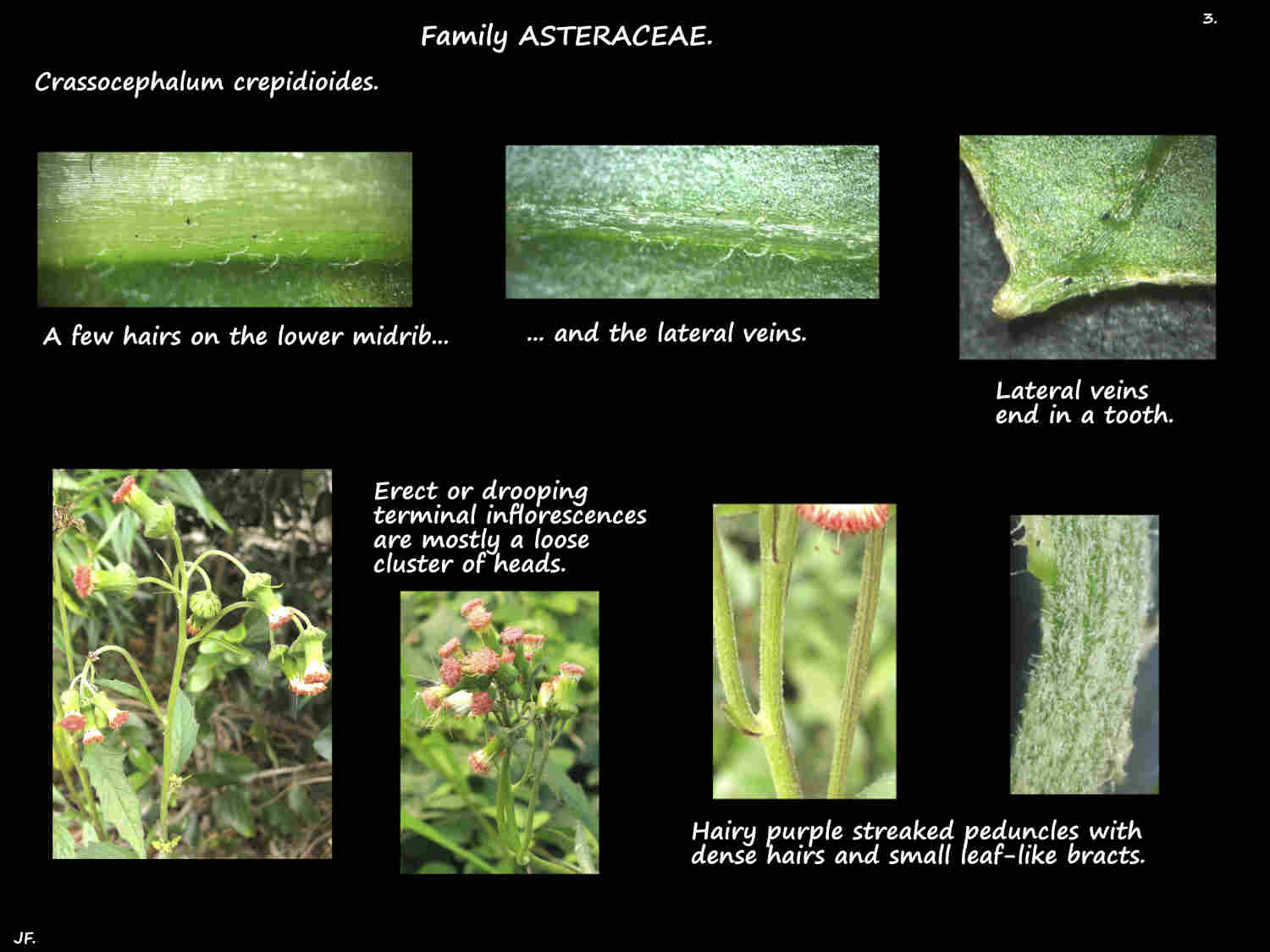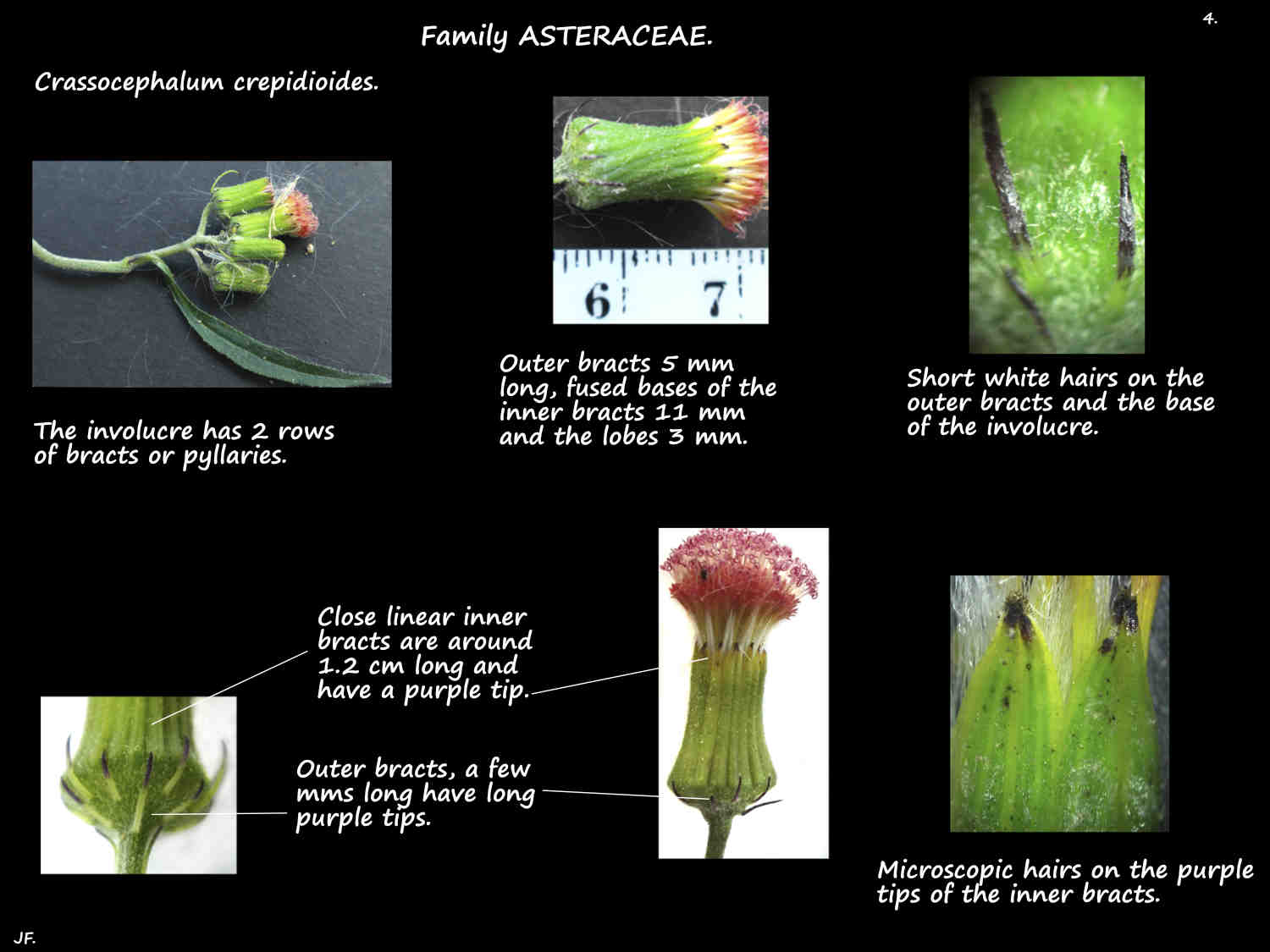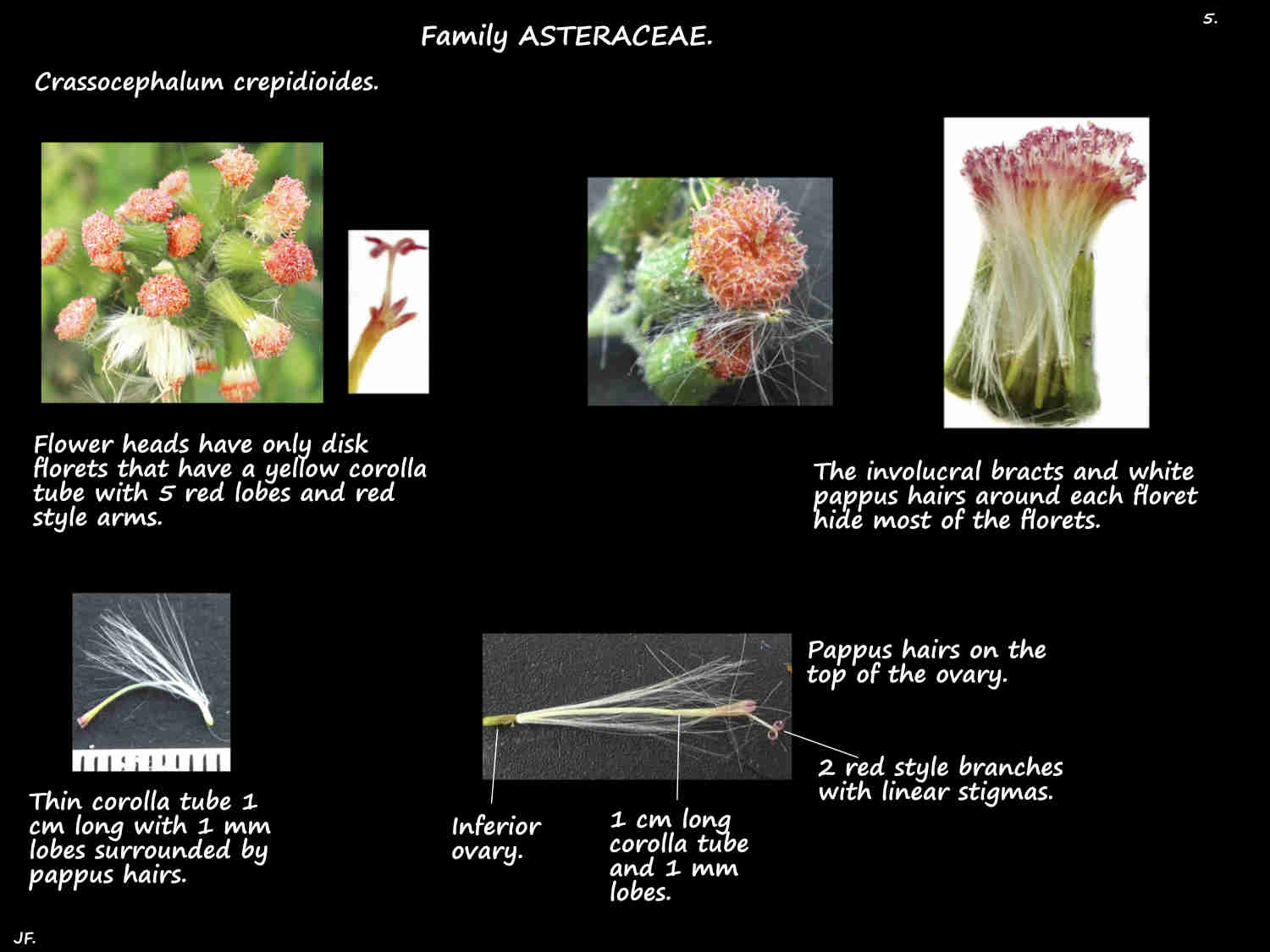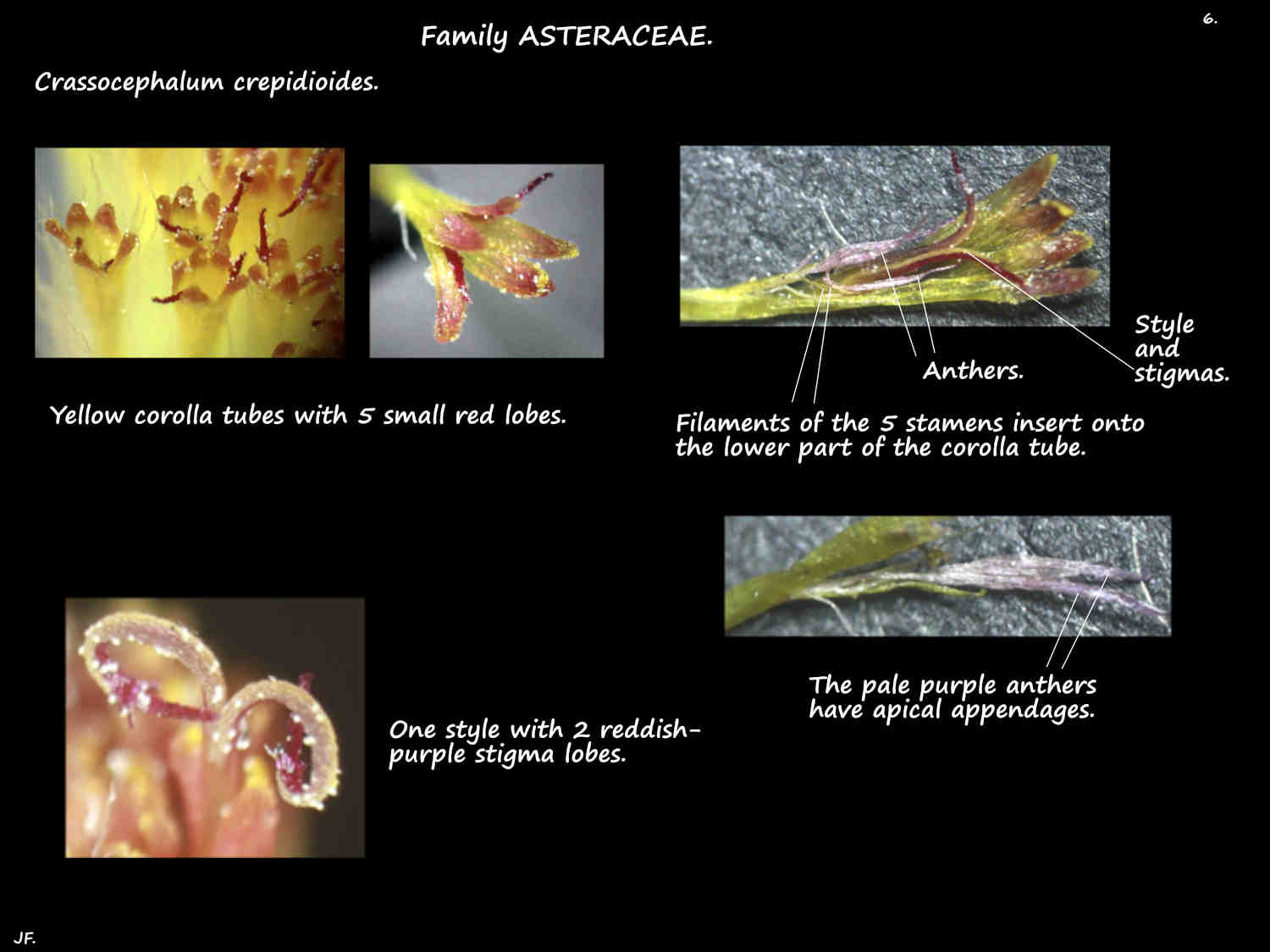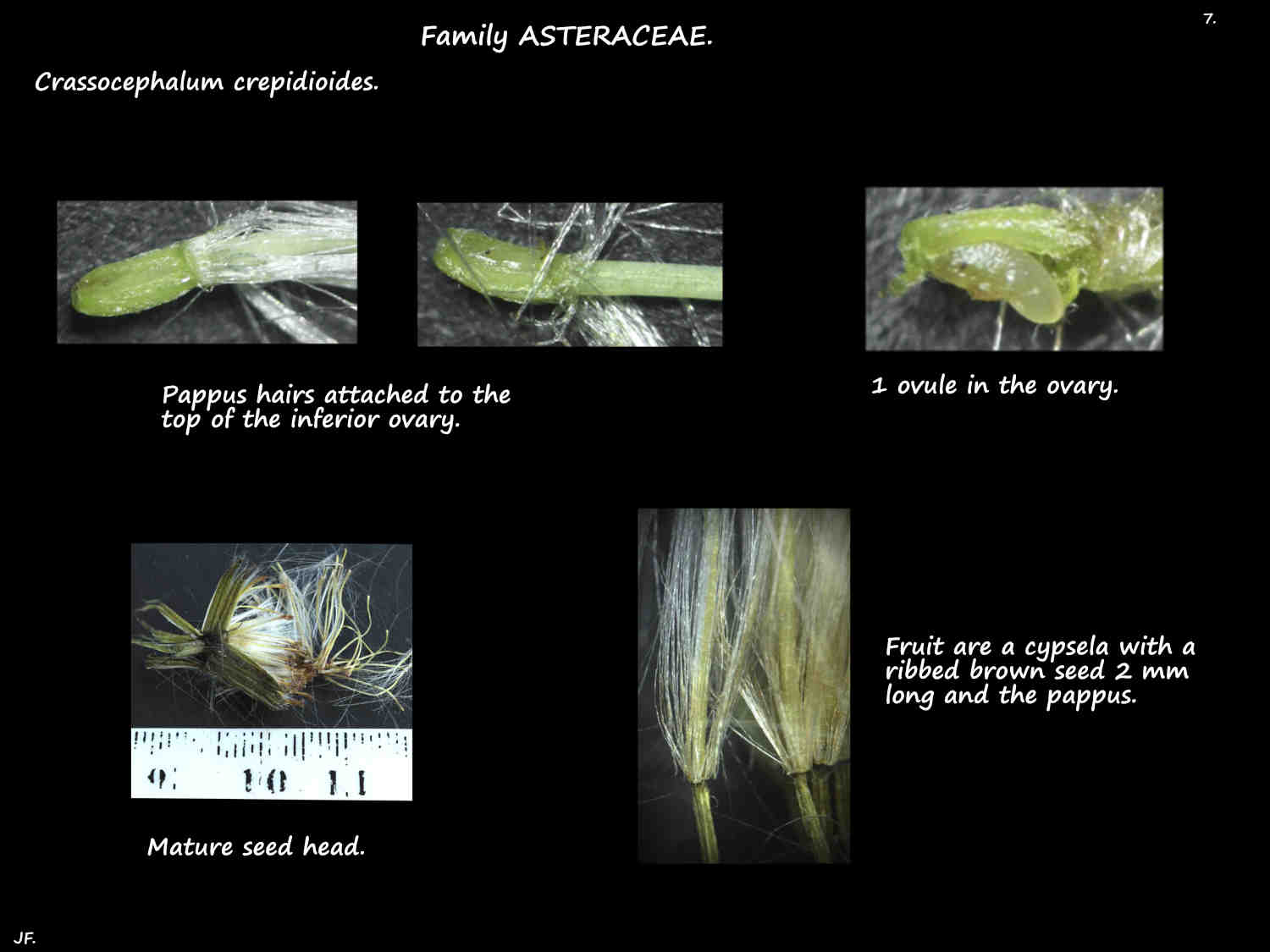Crassocephalum crepidioides.
The erect annual herbaceous plants are around 50 cm to 1 (1.6) m high.
The round or slightly ribbed stems usually have scattered hairs.
The green stems may have purplish streaks or blotches.
The alternately arranged leaves can have almost no petiole or one up to 4 cm long.
The base of the petiole may clasp the stem and the base of the blade may run down it as wings.
The lower leaves are ovate to elliptic in outline and up to 20 cm long and half as wide.
They may be undivided, have 2 lobes or auricles at the base or be irregularly pinnately divided with up to 4 pairs of lobes.
The smaller elliptic upper leaves are typically undivided but there may be 2 small basal lobes.
Leaves and lobes have pointed tips, the edge has irregular coarse teeth and there may be a few hairs.
Blades may have a red or purple tinge and the edge or veins may be purplish.
Inflorescences may be a solitary terminal head but are more frequently a loose cluster.
Heads can be erect or drooping at different stages of maturity.
They are on a hairy stalk or peduncle that has narrow leaf-like bracts.
The tubular heads are up to 1 cm long and around 4 mm across but widen at the base.
The involucre has 2 whorls of linear bracts or phyllaries.
Outer dark purplish bracts are only a few mms long.
Inner bracts, up to 12 mm long are green with a pointed dark purple tip.
They almost always have a few hairs.
The receptacle is convex and pitted where the florets attach.
Heads have no ray florets just numerous bisexual disk florets.
Disk florets have a corolla tube around 1 cm long with 5 pointed lobes 1 mm long.
The 5 stamens have anthers with a free apical appendage.
The inferior ovary has a style with 2 linear stigma bearing branches.
The pale yellowish corolla tube is largely hidden by the involucre and pappus hairs.
The colour of the head comes from the red corolla lobes and style branches.
The fruit are a cypsela but commonly called an achene which come from a superior ovary.
Cypselae have a 2 to 3 mm long dark or reddish brown seed with a tuft of hairs, the pappus at the top.
The cylindrical seed is ribbed and there are short hairs between the ribs.
The silky white pappus hairs, around 1 to 1.2 cm long may have a red or purple tint and they fall off easily.
J.F.

